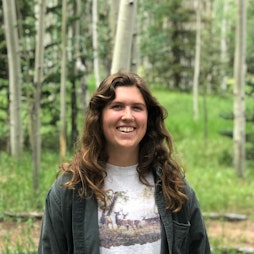Hike & History: Quick's Homestead

Here’s a video of another favorite place on property, Quick’s Homestead. The following is a brief history compiled from information from our resident history buff and homestead expert, Jerry McLain. If you ever want to know anything about the homestead or the history of camp, he is certainly your guy!
The Homestead is a restored 1890’s homestead and associated buildings that Sandy and Laura purchased from the Quick family in 1969. Interestingly enough, the Quicks actually never lived there, so it is really only called the Quick’s Homestead because the Sanborns purchased it from them. The Quicks have actually gone to camp for four generations now. Through its history, it has cycled through many owners, the first of which was a man named Daniel Bell. So Jerry thinks it should technically be called the Bell Homestead.
Through research many folks have done, it seems the high point of life at the homestead started in the 1920s, though we don’t have too much information about that time period. The original cabin was built very well - it was well-insulated with chinking and cementing techniques and great structural soundness. In the ’20s, a bigger cabin was added on and it’s much less structurally sound, which is evident in how it has deteriorated faster today than the original part.
In the ’40s, a family named the Georges lived at the homestead for a period of time. Jerry has been able to speak with Arlo George, Jr. and Gary George at length about their stay in the area, so we have more information, in the form of pictures and stories, about their lives here. They’ve told us that there actually used to be a fireplace where the big picture window is now - the story goes that their mom was pretty unhappy about leaving the plains for the mountains, so their dad removed the fireplace, installed a small woodburning stove (which is still there), and put in the big, thin-glass, non-insulating window to make her happy. It didn’t quite convince her, so the Georges did move back to the plains after a period spent in Florissant.
A few key areas / interesting tidbits about the homestead and its other buildings:
The Cellar: Next to the cabin itself lives a tool shed as well as a cellar built into the hillside. This cellar was in pretty good condition when the Sanborns purchased the property, but over time it started to cave in and was unsafe for people to go into. So, recently, the cellar was refurbished and rebuilt so that people can go inside and look around again. Because the cellar is actually pretty large, we can tell that the family before the Georges grew a lot of potatoes (a popular crop in this area). When the cellar was rebuilt, we also found old potato sacks in the back. The cellar is really the reason that homesteaders could subsist throughout the year - it mitigated the extremes of heat and cold for food and supplies. The Toolshed: Jerry has long frequented antique shows and shops in the area to try to bring historically-accurate tools and decorations to the homestead. However, most of the tools and decorations featured in all of the buildings are original. One such tool is the potato sorter: it’s in the tool shed in the back left corner. Because this exists, it’s clear that the family living in the homestead in the ’20s also sold or traded potatoes. No one would’ve had a piece of equipment that complex and expensive just for personal use. The sorter uses a series of screens to put potatoes into categories by size, and even includes a place to attach a potato sack so that same-sized potatoes can all get into the same bag. The Windmill: Through Jerry’s sleuthing and conversations with the Georges, he’s figured out that there used to be a windmill at Quick’s between the house and the south fence. In fact, when the parents of the George family left and moved back to the plains, they took their windmill back with them. Jerry has been hatching a plan to move the windmill that lives near Tie Cabin over to Quick’s Homestead to portray what it once looked like.
Today, the Quick Homestead is used heavily in the outdoor education program through High Trails Outdoor Education Center to teach about the history of settlement in the West. When Sandy and Laura bought the property, Jerry was teaching for those school weeks and was giving lessons that were much more general about Native populations in the area and trappers. Once Quick’s was purchased, it gave shape to the current format of our outdoor ed program - Discovery Groups where instructors role-play certain characters while teaching the history of the region - so now we have instructors as homesteaders in costume at Quicks. It’s also used often during the summer for overnight and day trips to learn about homesteading in the West.
We’ve always known that there is a rich history of our property - Jerry, and his collaboration with area residents and historians, helps us remember the details of this beautiful place.
